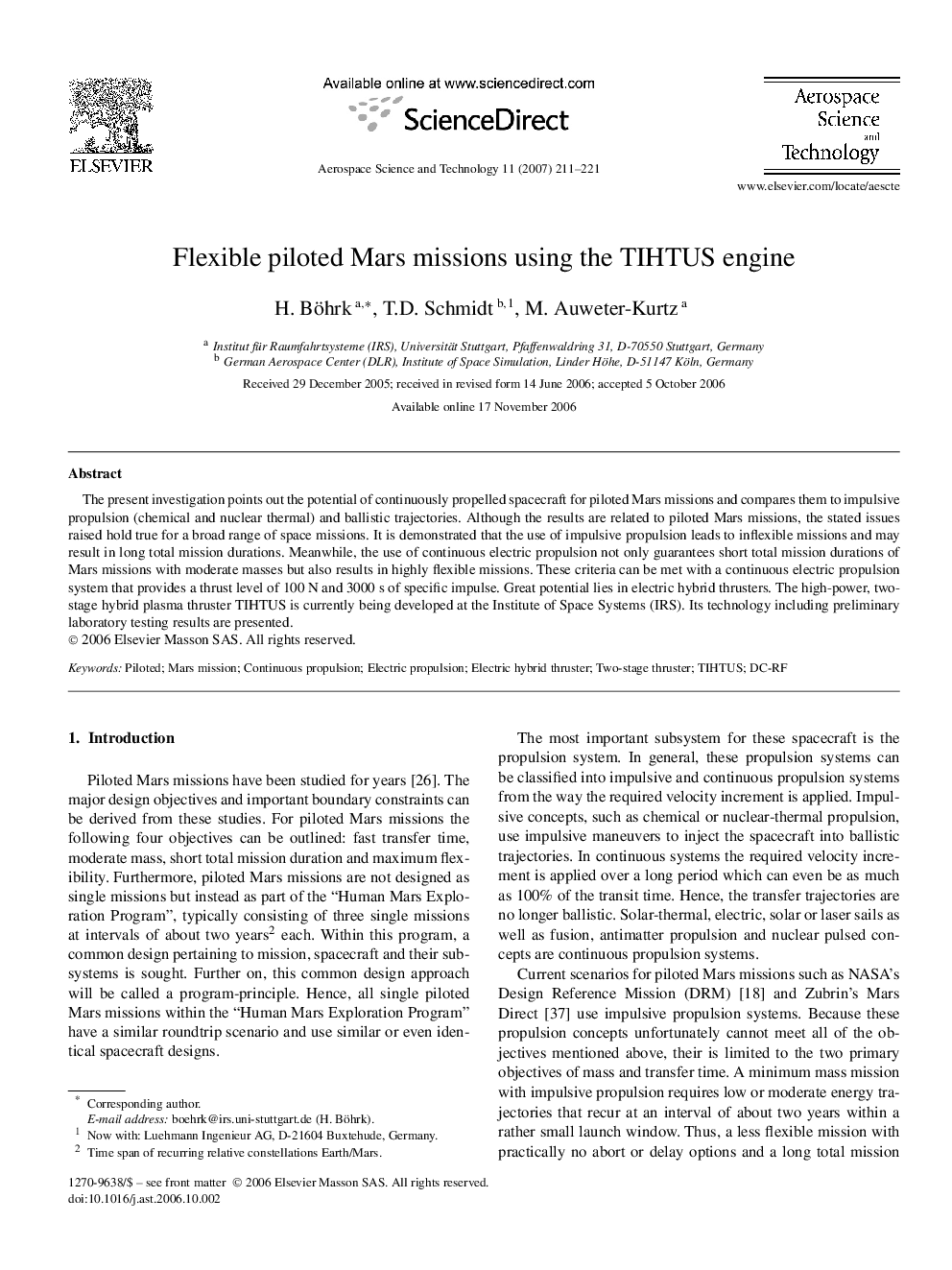| Article ID | Journal | Published Year | Pages | File Type |
|---|---|---|---|---|
| 1718964 | Aerospace Science and Technology | 2007 | 11 Pages |
The present investigation points out the potential of continuously propelled spacecraft for piloted Mars missions and compares them to impulsive propulsion (chemical and nuclear thermal) and ballistic trajectories. Although the results are related to piloted Mars missions, the stated issues raised hold true for a broad range of space missions. It is demonstrated that the use of impulsive propulsion leads to inflexible missions and may result in long total mission durations. Meanwhile, the use of continuous electric propulsion not only guarantees short total mission durations of Mars missions with moderate masses but also results in highly flexible missions. These criteria can be met with a continuous electric propulsion system that provides a thrust level of 100 N and 3000 s of specific impulse. Great potential lies in electric hybrid thrusters. The high-power, two-stage hybrid plasma thruster TIHTUS is currently being developed at the Institute of Space Systems (IRS). Its technology including preliminary laboratory testing results are presented.
